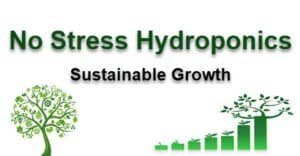
Hydroponic farming has seen a surge in popularity in recent years, thanks to the many advantages it offers over traditional soil-based agriculture. However, while there are numerous benefits associated with hydroponics, there can also be some notable drawbacks depending on the type of system being utilized.
In this blog post we’ll take a look at some of the potential disadvantages related to vertical hydroponic farming – its high cost and energy requirements, as well as its reliance on chemical inputs and lack of biodiversity – so you can decide whether or not this method is right for you.
What Is Vertical Hydroponic Farming And How Does It Work
Vertical hydroponic farming is a type of soulless, or soil-free, farming that enables the efficient production of plants in vertically stacked layers. Instead of being grown in large fields, crops are produced in vertical towers or racks.
Nutrient solutions and water are delivered directly to the plant’s roots via irrigation systems, allowing the nutrients to be directly absorbed into the plant. This method of farming is highly efficient, as it does not require soil and takes up less space than traditional methods of farming.
Additionally, there are a number of environmental benefits associated with vertical hydroponic farming, such as reduced water consumption and minimized pesticide use.
The major components of vertical hydroponic farming include a growing medium, nutrient solution, light source, and irrigation system. The growing medium provides the necessary support for the plants as well as a place to store the nutrient solution.
The nutrient solution contains essential minerals and nutrients that are delivered directly to the plant’s roots via an irrigation system. A light source is also needed to provide the plants with enough light in order for them to photosynthesize and produce energy.
Finally, the irrigation system is responsible for delivering water and nutrient solution throughout the entire tower or rack.
The Benefits Of Vertical Hydroponic Farming
Vertical hydroponic farming offers numerous benefits to farmers. These include improved crop yield, water and nutrient conservation, higher quality produce, and a faster growing cycle.
Vertical hydroponics can more efficiently use energy than traditional agricultural methods by taking advantage of the natural vertical structure of plants.
The closer together the plants are grown, the more efficiently photosynthesis can occur. By stacking multiple levels of plants, vertical hydroponic farming can save energy by utilizing the area under the canopy of taller plants to maximize production.
Water and nutrient conservation are major benefits of vertical hydroponics. Traditional agriculture requires large amounts of water for irrigation and uses chemical fertilizers to supplement the nutrient content of the soil.
However, with vertical hydroponic systems, water and nutrients are efficiently used and recycled within the closed-loop system. This ensures minimal waste, which helps conserve resources while also reducing costs.
Vertical hydroponics is also beneficial to the quality and freshness of crops produced. By providing a controlled environment for growing, the crops are not exposed to extreme temperatures or weather conditions.
This helps to maintain their quality and increase their shelf life. Additionally, vertical hydroponic systems can provide farmers with access to a larger variety of crops due to the ability to customize growing conditions for specific plants.
The Disadvantages Of Vertical Hydroponic Farming
Vertical hydroponic farming can be a great way to produce food in limited space, but there are also some disadvantages associated with this type of farming. The most obvious disadvantage is the cost.
Since vertical hydroponic systems involve the purchase and use of a variety of materials and equipment, they tend to be more expensive than traditional methods of farming.
Additionally, since the systems require more technical knowledge and maintenance, they can also be labor-intensive and costly to maintain.
Another disadvantage of vertical hydroponic farming is that it takes up a lot of space, which can be a major issue if you don’t have an adequate area for the system.
In addition, since it requires the use of additional electricity, it can also be costly to operate. Lastly, since vertical hydroponic systems are closed-loop ecosystems, they can become easily contaminated with unwanted organisms or chemicals, making it challenging to maintain a healthy environment for plant growth.
How To Overcome The Disadvantages Of Vertical Hydroponic Farming
Vertical hydroponic farming can be a great way to maximize production in small spaces, but there are some downsides that should be addressed. Here are some tips for overcoming the disadvantages of vertical hydroponic farming:
- Monitor nutrient levels closely: Vertical farms have a higher concentration of plants and require more frequent monitoring of nutrient levels. Regularly test the water and adjust nutrient levels as needed to ensure optimal growth of your plants.
- Use multiple systems: Multiple hydroponic systems with redundant parts can help limit downtime if one system fails. You can also stagger crops so that you always have something growing, even when maintenance is required on one system or another.
- Invest in automation: Automated hydroponic systems can help reduce the labor required to maintain a vertical hydroponic farm and make it easier to manage multiple systems.
Automation also limits human error, so you don’t have to worry about nutrient levels slipping or water temperatures being wrong.
- Utilize artificial lighting: Natural sunlight often cannot reach the bottom of a vertical hydroponic system, making it necessary to use grow lights.
Invest in high-quality LED or HID lamps that provide adequate light and encourage healthy plant growth.
- Keep pests away: Vertical farms are at greater risk for pest infestations, as pests can easily spread from one plant to another. Use traps, pesticides and other treatments as needed to keep them away.
By following these tips, you can make the most of vertical hydroponic farming and overcome some of its disadvantages.
Conclusion
In the end, it is important to remember that there are both advantages and disadvantages to vertical hydroponic farming. Consider your specific needs and context before making a decision about whether or not this type of agriculture is right for you.
